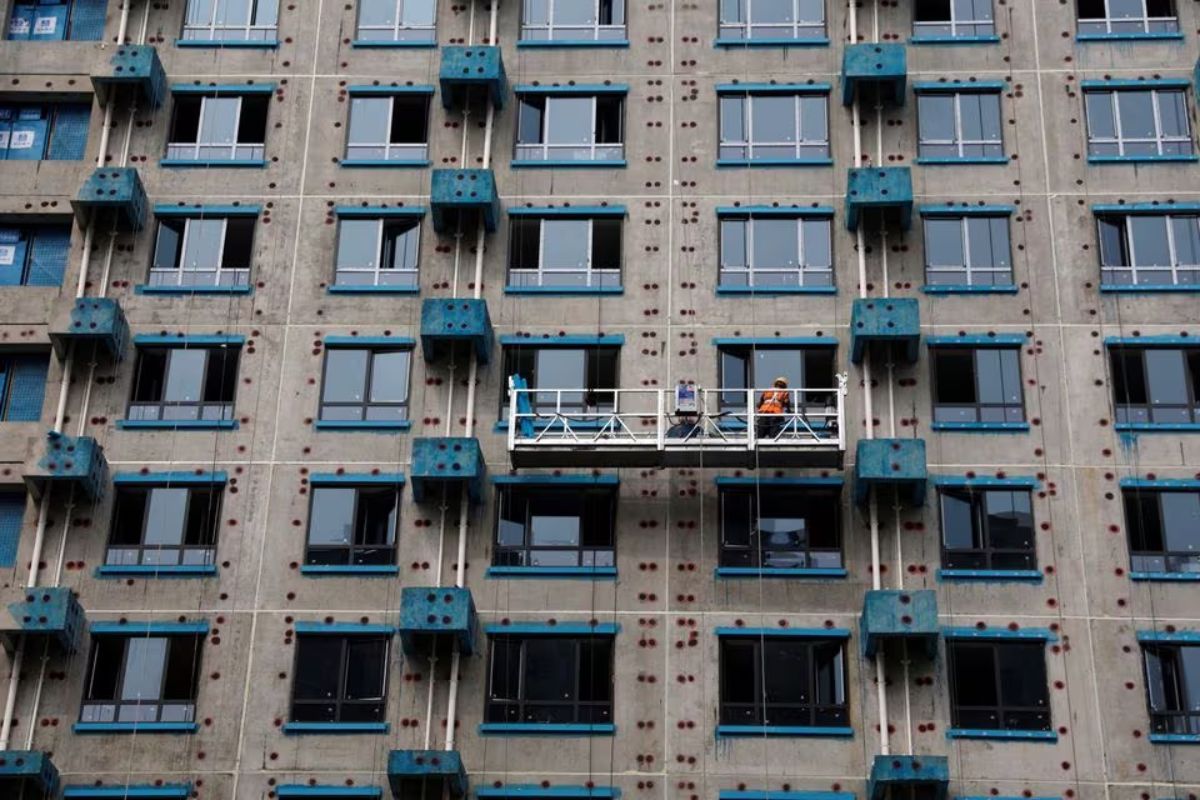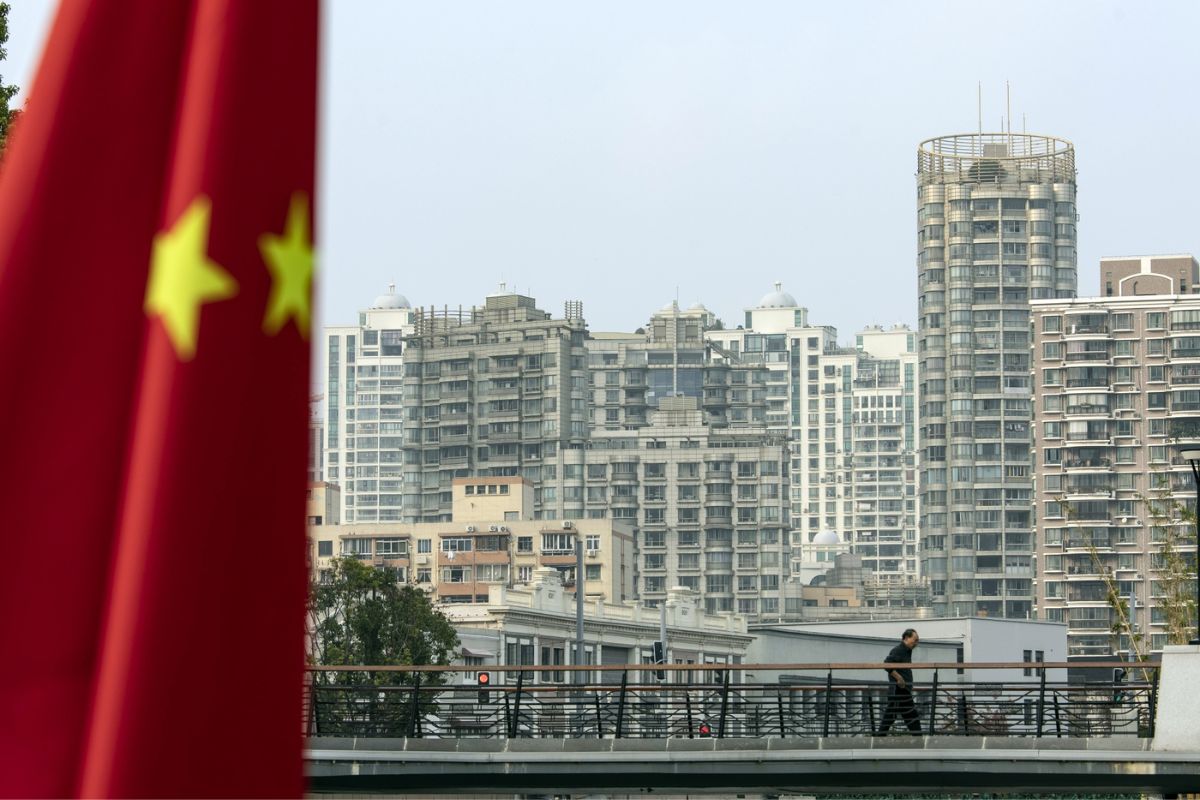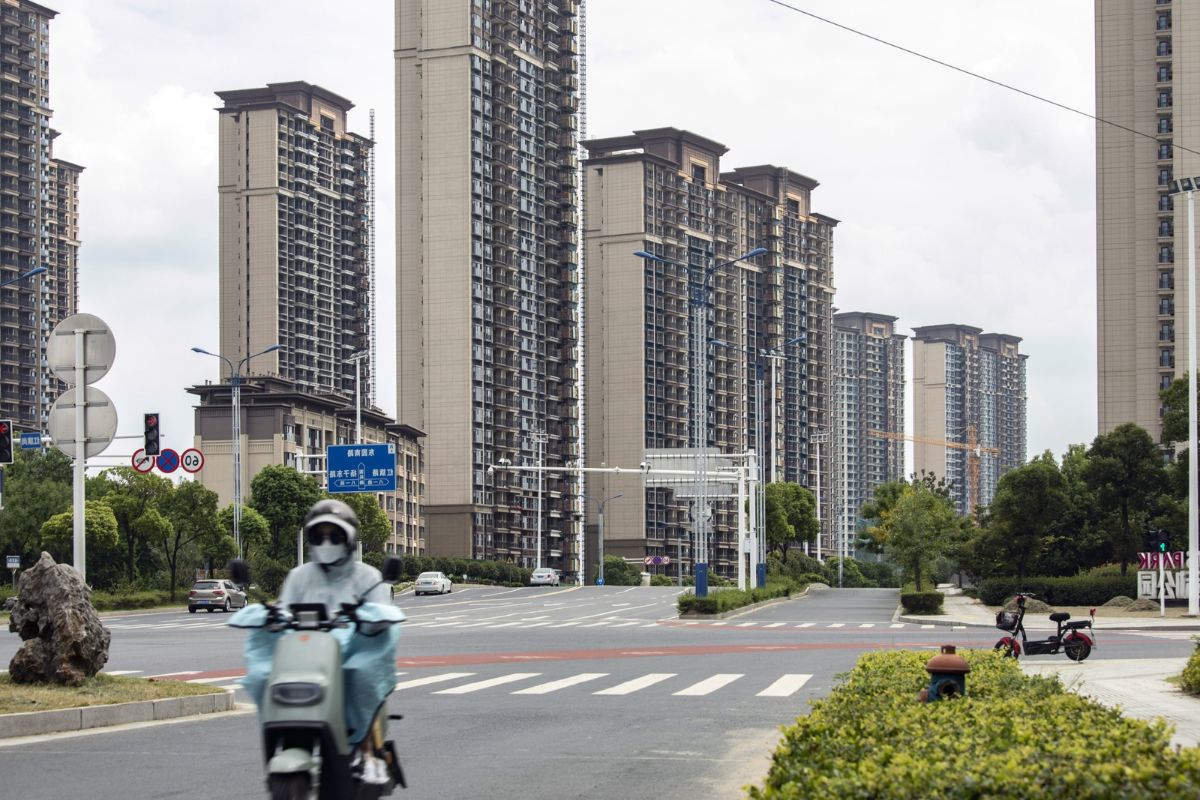China’s Property Sector has been facing significant challenges in recent years. Despite the lingering impact of Evergrande’s financial troubles and the worst declines in new home prices in nearly nine years, there are positive indicators that suggest a potential recovery. New home prices and government land sales have surged, indicating a resurgence in the property sector.
However, the government’s policies continue to exert a significant influence on the real estate market. Additionally, the challenges in home-buying sentiment cannot be ignored. As we delve into the complexities of China’s real estate market, it becomes clear that while there are signs of resilience, there are still uncertainties that could potentially shift the dynamics of the market.
Key Takeaways
- New home prices in China experienced the fastest monthly growth in almost 2.5 years, indicating a potential turnaround in the property market.
- Government measures aimed at revitalizing the real estate sector have shown promising results, benefiting developers and boosting construction activity, job creation, and consumer spending.
- Despite signs of recovery, the real estate market still faces challenges such as a decline in investment and new construction starts, reflecting low buying sentiment and lack of demand.
- The ongoing financial troubles of Evergrande, one of China’s largest real estate developers, create uncertainty and may have broader implications for the stability of the property sector.
China’s Property Sector Shows Signs of Recovery: New Home Prices and Government Land Sales Surge
China’s property sector is displaying promising signs of recovery. New home prices experienced their fastest monthly growth in almost 2.5 years. This indicates a potential shift in the dynamics of the property market, suggesting a slowdown in the sector’s decline.
In January, new home prices rose by 0.15%, marking the fifth consecutive month of positive trends across 100 cities. This positive growth reflects an increasing demand for housing and a potential improvement in market conditions.
Also Read: China’s Project Whitelist Unveiled: First Development Loan Signals Financial Support Initiative
Concurrently, government land sales, which had been in a 23-month slump, showed signs of recovery. There was a 1.8% year-on-year increase in revenue in December. These developments signify the possibility of a turnaround in the property market, bringing hope for its recovery.
Government Policies Impacting the Real Estate Sector: Positive Indicators After Years of Decline
Government measures aimed at revitalizing the real estate sector have shown promising results, indicating a potential turnaround after years of decline. Despite the recent challenges faced by the property market, the positive indicators offer a glimmer of hope for the sector’s recovery.
Analysts suggest that these government policies, implemented in response to the slowdown triggered by the default of China Evergrande, are finally starting to take effect. The surge in new home prices and government land sales is a clear indication of the positive impact of these measures.
This resurgence in the real estate sector not only benefits developers but also has a ripple effect on the broader economy, boosting construction activity, creating jobs, and stimulating consumer spending. The government’s proactive approach to supporting the real estate sector is a testament to its commitment to ensuring a stable and resilient economy.
Lingering Challenges Despite Positive Signals: Worst Declines in New Home Prices in Nearly Nine Years
Despite the positive signals indicating a potential turnaround in China’s real estate market, there are still lingering challenges that need to be addressed. The worst declines in new home prices in nearly nine years are a clear indication of the struggles faced by the sector. The recent data from the National Bureau of Statistics highlights the lack of demand and low buying sentiment in many areas. A 9.6% drop in investment and a staggering 20.4% decline in new construction starts paint a bleak picture for the industry. These figures show that efforts to revive the sector and boost prices have not been successful thus far.
To ensure a sustained recovery, it is imperative for policymakers to address these challenges and implement effective measures. Stimulating demand and stabilizing home prices should be the priority.
Real Estate Enterprise Sales Experience Significant Year-on-Year Drop: Challenges in Home-Buying Sentiment
The significant year-on-year drop in real estate enterprise sales highlights the challenges faced by the industry, particularly in relation to weak home-buying sentiment. Despite positive signals in the broader market, the total sales of 100 surveyed real estate enterprises saw a substantial decline of 33.3% by value in January.
This data is a clear indication that the sector is not yet out of the woods and still faces obstacles to a full recovery. The weak home-buying sentiment is a result of various factors such as economic uncertainty, stricter regulations, and concerns over property prices.
To overcome these challenges, real estate enterprises need to focus on building trust with potential buyers, offering attractive incentives, and adapting their strategies to meet changing consumer preferences. Only by addressing these challenges head-on can the industry regain its momentum and thrive in the future.
Evergrande’s Lingering Impact and Future Outlook: Uncertainty and Potential Shift in Market Dynamics
Evergrande’s ongoing financial troubles have created a cloud of uncertainty, potentially leading to a significant shift in market dynamics for China’s property sector.
The shadow of its debt problems continues to cast doubt over the industry, with Fitch Ratings suggesting that the liquidation process will be lengthy, causing broader implications for creditors and the property sector as a whole.
The confidence in private developers may take considerable time to recover, potentially leading to a shift in market share towards state-owned companies.
This uncertainty surrounding Evergrande’s future and its impact on the market has raised concerns about the overall stability of China’s real estate sector.
As we await the official new home prices data for January, expected on February 23, further insights will be gained into the state of China’s property market and its potential trajectory.
Conclusion Of China’s Property Sector
China’s real estate market has shown resilience amid various challenges. Despite years of decline, the sector has seen positive indicators such as a surge in new home prices and government land sales.
However, there are still lingering challenges, including the worst declines in new home prices in nearly nine years and a significant drop in real estate enterprise sales. The impact of Evergrande and the future outlook of the market remain uncertain, posing potential shifts in market dynamics.
Our Reader’s Queries
Q1 Why is China’s property market crashing?
A The ongoing financial crisis in the Chinese property sector from 2020 to 2024 stems from the challenges faced by Evergrande Group and other Chinese property developers. These difficulties have arisen due to extensive overbuilding and the implementation of new Chinese regulations governing debt limits for these companies.
Q2 What is the housing market forecast for China?
A Anticipated by economists, there is an expected decline next year with predictions indicating a 5% fall. Wang Xingping, a senior analyst at Fitch Bohua, attributes this decline to the fact that homebuyer confidence has not fully recovered. As per the survey, property investment is projected to experience a 10% slump in 2023, followed by an 8.4% decrease in 2024.
Q3 Is China’s real estate market collapsing?
A In the Chinese residential market, new home sales witnessed a 6% decline in 2023, accompanied by a decrease in secondhand home prices in major cities. Additionally, on the development front, new residential projects experienced a substantial decrease, falling by 58% from 1,515 million m² in 2019 to 637 million m² in 2023.
Q4 Why is China slowing down?
A China grapples with significant structural challenges, including decelerating productivity growth and an aging population, posing threats to its future economic expansion beyond the rebound from pandemic-induced disruptions and a substantial contraction in its construction sector.




